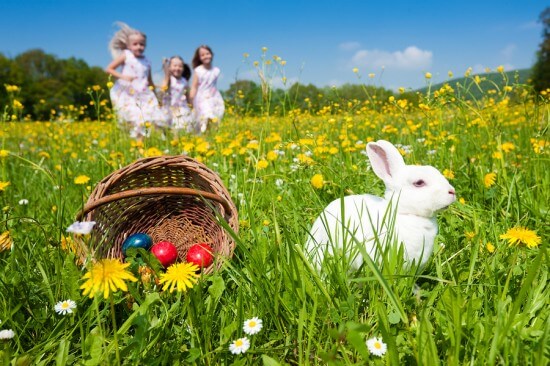
While the Easter bunny has become the central figure of the commercial aspect of Easter there is actually a long and religiously linked history of how the Easter bunny came to be. In the ancient world, the rabbit had long been a symbol of fertility. Even today the rabbit is known for its reproductive prowess, (with reference to humans who ‘multiply like rabbits’). It is believed that because the rabbit is known to reproduce often, it was seen has having special powers in assisting humans to reproduce. In fact your own lucky rabbit’s foot goes back to this ancient tradition.
In Europe (prior to the introduction of Christianity) the ancient pagans already had their own springtime festivals. This was universal among almost all ancient peoples. This is thought to have been since spring is the time, after the harshness of winter, that the world begins to bloom once more; it is seen as a time of replenishing and renewal, birth and rebirth, and increased fertility.
According to some historical experts, the Goddess of Fertility in Northern Europe before the coming of the Christians was known as Eostre. It is believed that it is from her that our own word for Easter comes. The consort of Eostre was that great animal symbol of fertility, a hare. According to some traditions, Eostre would cast the hare into the Heavens, creating the constellation we know today as Lepus the Hare. Some stories also relate that Eostre gave Lepus the ability to lay eggs once a year, since eggs were an ancient symbol of fertility.
As Christianity expanded north from the Mediterranean world where it was born and grew rapidly, it also evolved. It became very common for Christians to attempt to incorporate pre-Christian ideas and rituals and place them within the context of Christian ideas and rituals. Thus they began creating a mix of both Christian and Pagan celebrations.
These traditions continued to co-exist for some time. Yet even with many historical records it is still unclear as to exactly when the rabbit first became a major part of the Christian celebration. Actually where this took place is a little bit clearer. The first written mentions of the Easter Bunny come from Germany in the 15th Century, although we do not know for sure how long the Germans had used the symbol. It was also in Germany sometime during the 1800s that the tradition of making chocolate bunnies to celebrate Easter began.
At the same time however, the Easter Bunny had already come to the United States. German settlers in Pennsylvania brought along their traditions with them when immigrating. This includes the traditions of the Easter Bunny. These new settlers called him Osterhase, or Oschter Haws, who would lay brightly colored eggs to good children after these children would make special nests in their caps and bonnets the night before.
Over time this tradition grew, and soon Osterhase (or the Easter Bunny as he is known today) began to bring more than just eggs. He would bring chocolate and candies as well. And rather than making nests in caps and bonnets, the Easter Bunny would leave his treasures in a decorated Easter basket.
Although this was begun by German immigrants, these practices soon caught on throughout the United States and are now almost universally practiced. Christians and non-Christians alike look forward to Easter as a celebration of life and family. Whether religious or secular, the Easter Bunny, that ancient symbol of fertility, is the central figure. Across the country and around the world children now wait eagerly for Easter to find their baskets full of eggs and chocolate left for them the night before by the Easter bunny.
